The BOKA Vanguard made global headlines last year by serving as a floating dry dock for the Carnival Vista, a giant cruise vessel. “This was the first time ever that we took a theater, restaurants, shops, swimming pools with slides, a mini golf course and a 250-strong crew on board one of our vessels,” says Project Director Roland Makkink, who finished this unique job with his team successfully after an extremely short preparation time.
With 1,968 cabins and room for about four thousand passengers, the shipping company Carnival’s Vista is one of the world’s larger cruise vessels. It is 324 meters long and weighs 67,000 tons. “The ship experienced problems with the propulsion system in early June so that it could only sail at half power,” says Roland. “Carnival had to cancel a number of cruises to have repairs done but the only suitable dry dock in the Caribbean had just been shut down.” With the BOKA Vanguard, Boskalis has the largest semi-submersible transport vessel in the world. The vessel is 275 meters long, 70 meters wide and it has a cargo capacity of almost 120,000 tons. “As well as transporting heavy loads, the Vanguard is also extremely suitable for docking ships on the open sea,” says Roland. “Boskalis had already announced a few years before that it could transport the grounded cruise vessel Costa Concordia. Partly as a result, Carnival asked us whether the BOKA Vanguard could serve as a floating dry dock for the Vista.”
Within one week
The contract was signed shortly after the initial discussions. It was agreed that all the stops would be pulled out to get the ship operational again as soon as possible. During the two-week voyage from Europe to the Bahamas, the Boskalis engineering team on board prepared the outfitting of the Vanguard, which included moving a buoyancy casing and positioning the cribbing. Looking back on the project, Roland says: “The preparation time was extremely short. We normally have to work through extensive procedures and intensive review cycles with the client but it was now a question of moving very fast. This was truly an exceptional situation. Even so, all the negotiations were constructive and the contacts were extremely positive throughout the operation.”
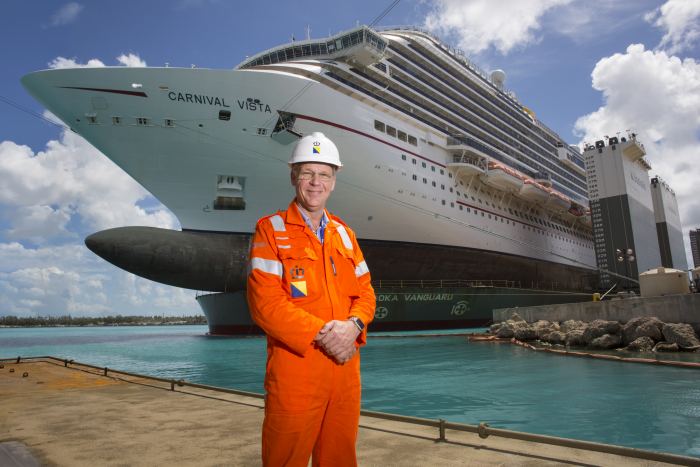
Project Director Roland Makkink
Complex logistics
The preparatory work began as soon as the Vanguard arrived at the port of Freeport. “One of the challenges was to resolve logistical issues that we wouldn’t normally have to deal with,” explains Roland. “By the time the Carnival Vista arrived, all four thousand passengers had already disembarked. But a huge cruise vessel like this also houses about fifteen hundred personnel and crew members. In the interests of safety, and above all to ensure that, in the event of an emergency, everyone could be evacuated within fifteen minutes, only 250 of them were allowed to stay on board. Accommodating all those crew members elsewhere was not our responsibility but it’s at times like this that you realize how colossal and complex the logistics are on a cruise vessel of this kind.”
ONE OF THE MAIN CHALLENGES WAS THE FACT THAT WE HAD TO EXECUTE THE PROJECT DURING THE HURRICANE SEASON.
Water pressure
“One of the main challenges was the fact that we had to execute the project during the hurricane season. So our team made thorough preparations for possible interruptions but, fortunately, the weather conditions didn’t cause any problems,” says Roland. “Another logistical challenge was to maintain water pressure on the Vista. A nearby shipyard was able to supply us with two large water boosters that we used to pump water from the seaward side onto the vessel. A lot of cooling water was needed for the air conditioning on board and for the ship’s generators, which had to continue to supply power to refrigeration units, freezers and all kinds of electrical appliances,” he explains.
OBVIOUSLY, OUR EXPERTISE WAS ONE OF THE CRITICAL SUCCESS FACTORS BUT THE GOOD COLLABORATION AND OUR ENTREPRENEURIAL TEAM SPIRIT WERE PARTICULARLY VITAL.
Floating hotel
Within a week of the Vanguard’s arrival in Freeport, the loading operation began. “Before we started, we conducted an evacuation drill for the crew who were still on board,” says Roland. “We were about to load the equivalent of an entire apartment building, and that was real precision work. To ensure stability, we needed to maintain a trim of seven meters between the bow and the stern of the Vanguard during the loading and unloading of the Vista.” One unusual factor was the roundabout route that Roland and his team had to take from their workplaces on the Vanguard to the bridge of the Vista. “That route went straight through the cruise vessel and its cargo, and the vessel was secured with an electronic access control system at both the entrance and the exit. That’s brought it home again that we had a floating hotel on board that was as big as a complete apartment building. There really were two separate worlds. But Carnival was kind enough to invite the Boskalis colleagues to lunch and dinner on the Vista during the loading operation,” recalls Roland.
Magnificent view
Once the Vanguard had been submerged to the right depth, the Vista was positioned above the deck of the Vanguard under its own power with assistance from four tugs, including Boskalis’ oceangoing tug Sovereign. From the loading location, the Vanguard sailed a few miles to a position in the port. The cruise vessel was almost fifty meters longer than the Vanguard so it stuck out slightly on either side. That simplified the work on the stern that was done from a working vessel. “The enormous bridge of the Carnival Vista provided a magnificent view of Freeport and the loading of the Vista,” says Roland. “It was impressive to watch the loading operation from a vantage point fifteen meters higher than usual.”
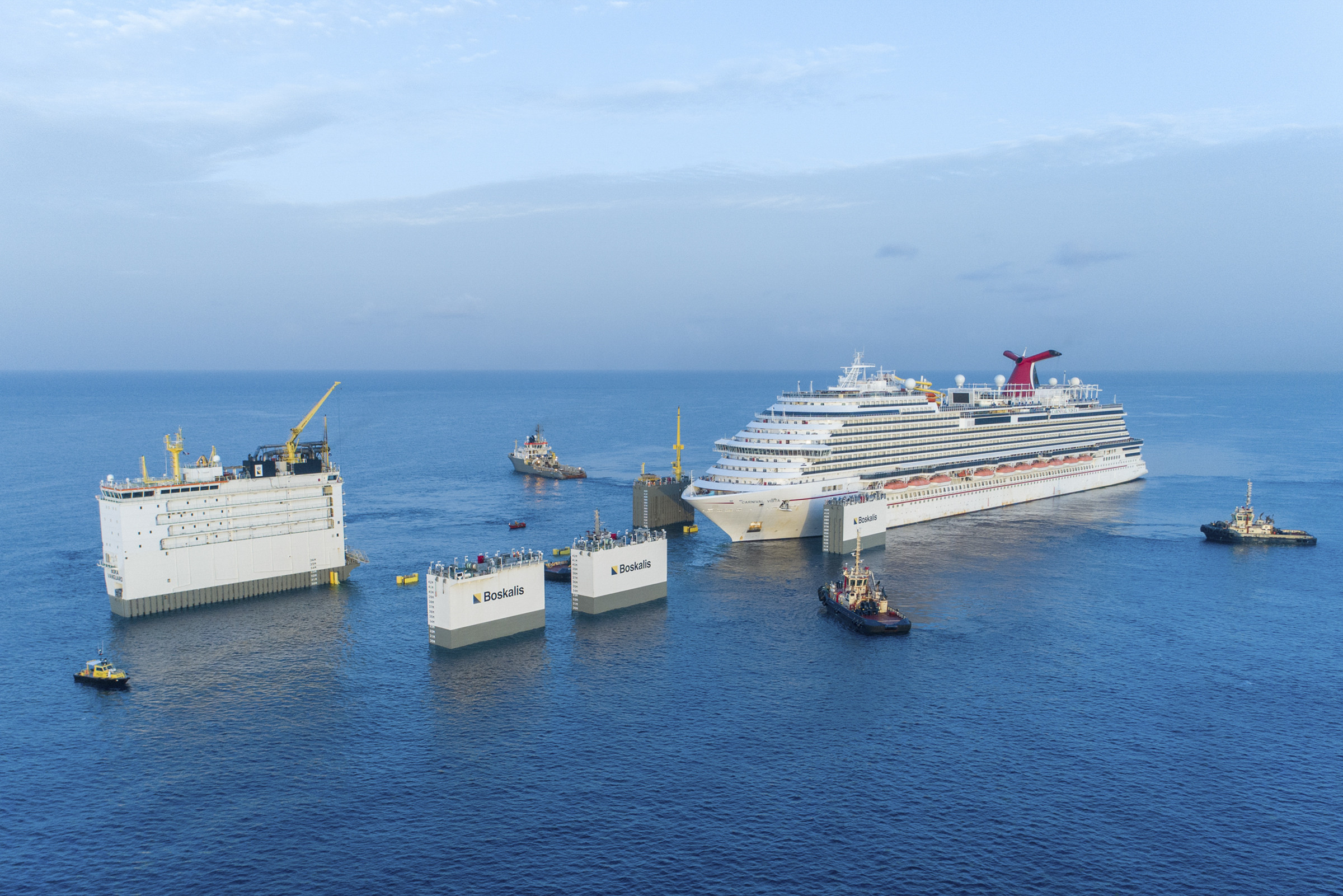
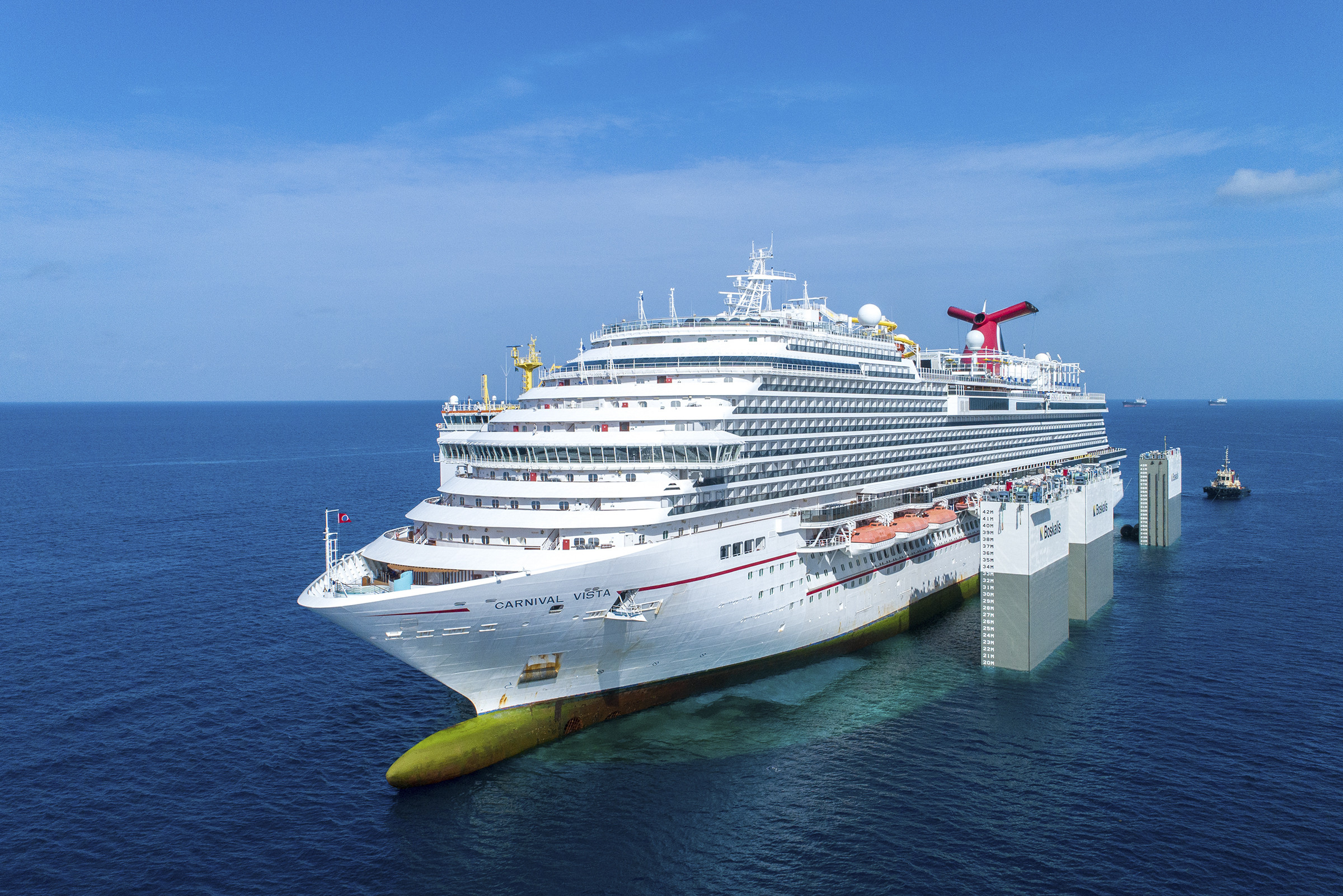
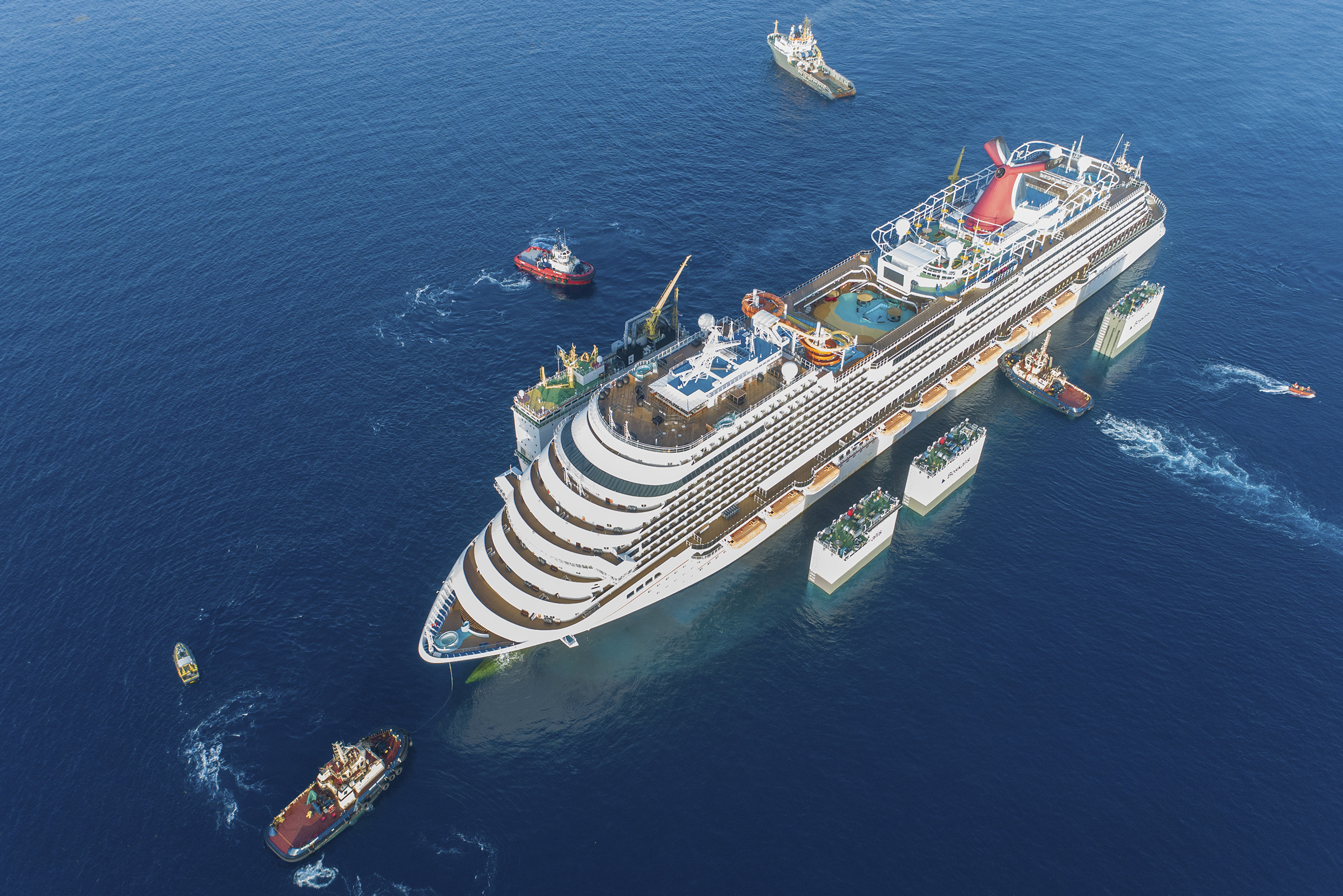
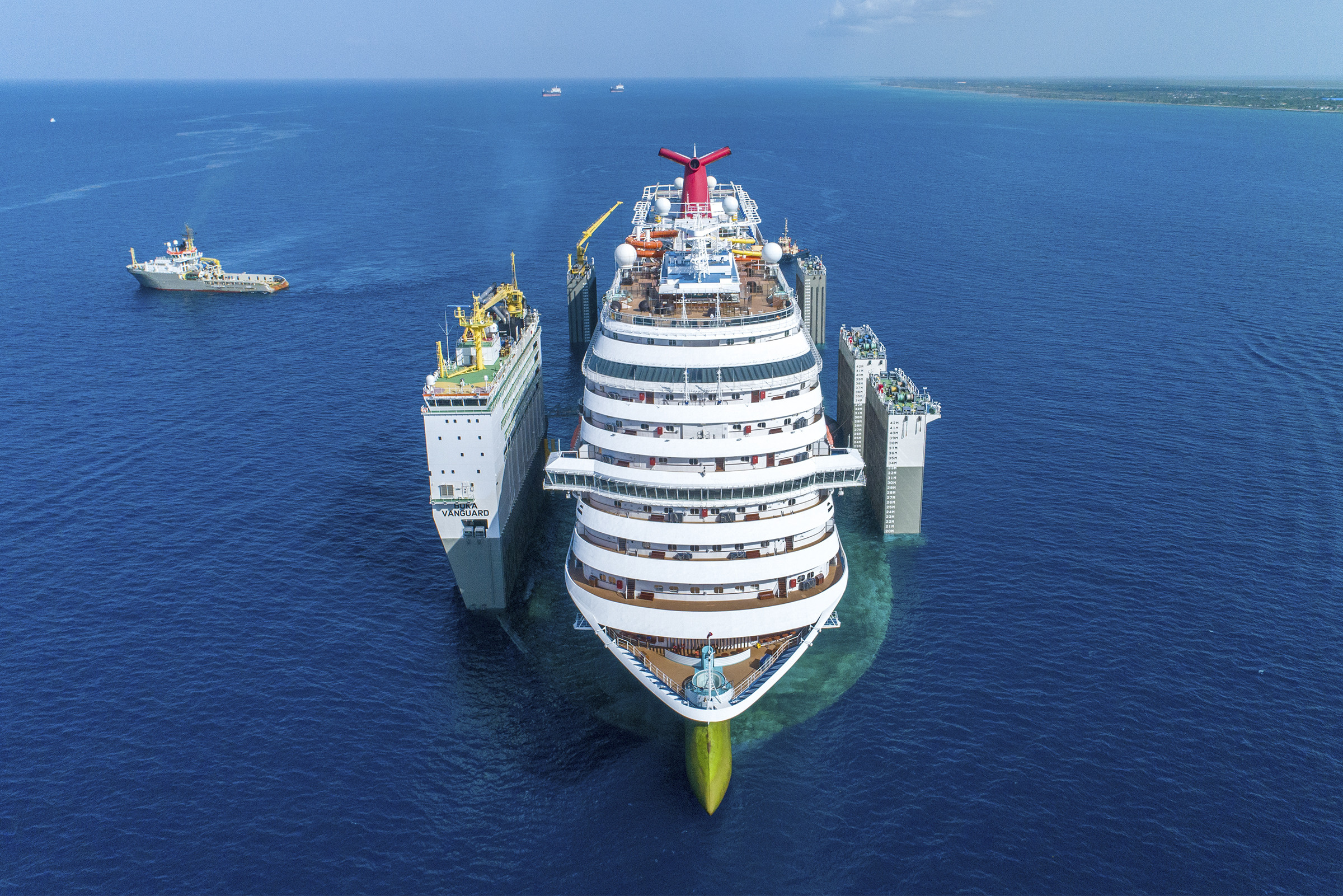
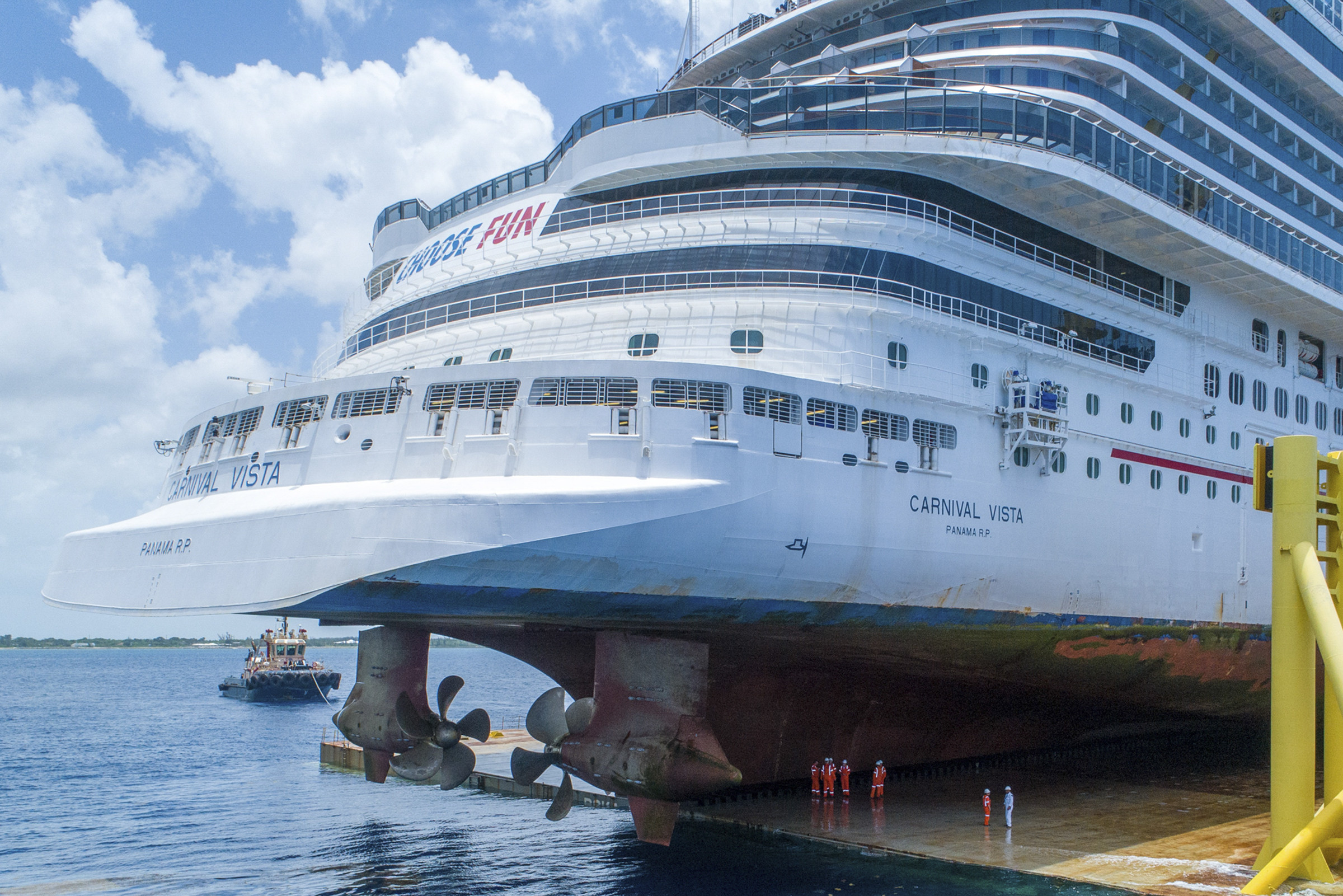
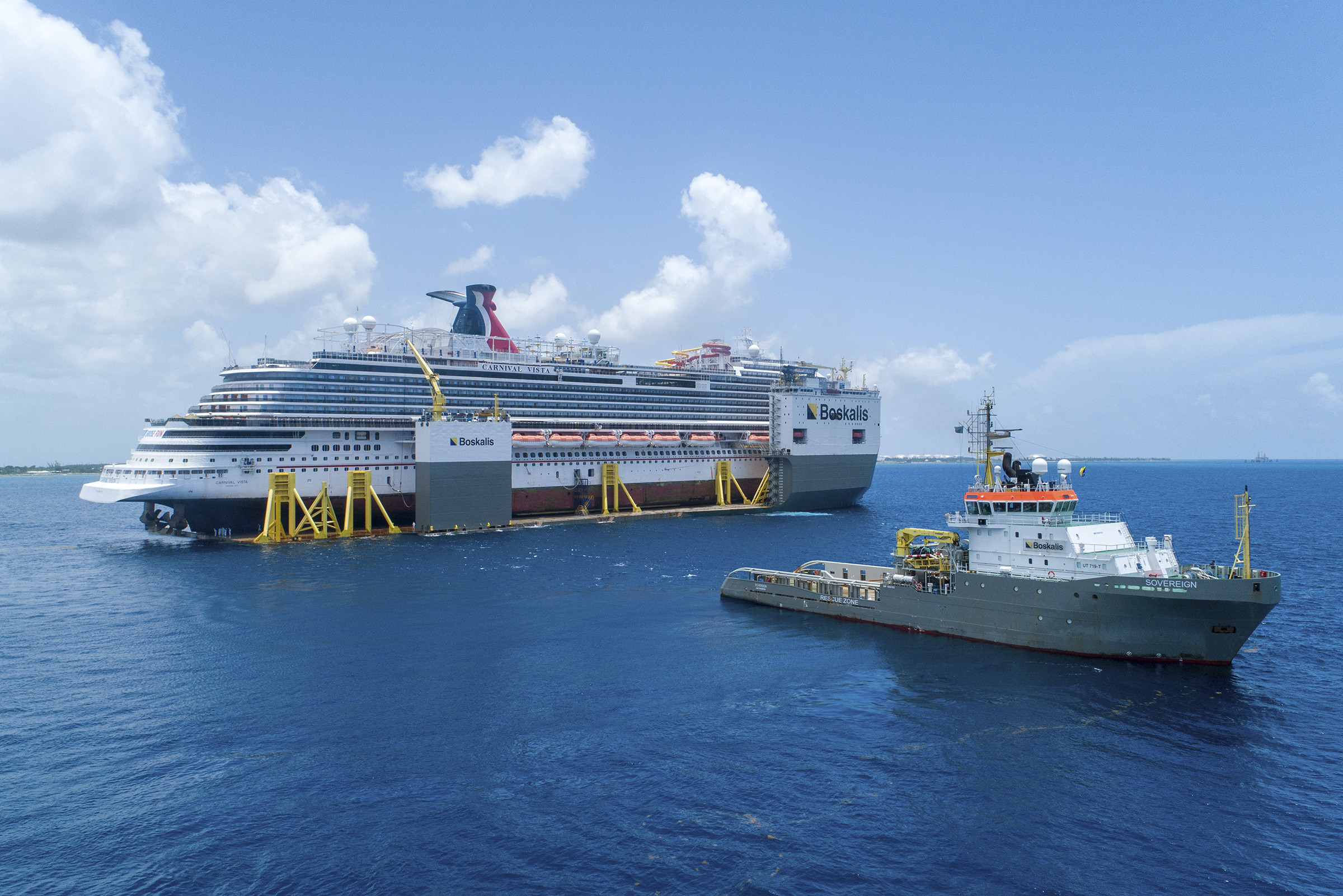
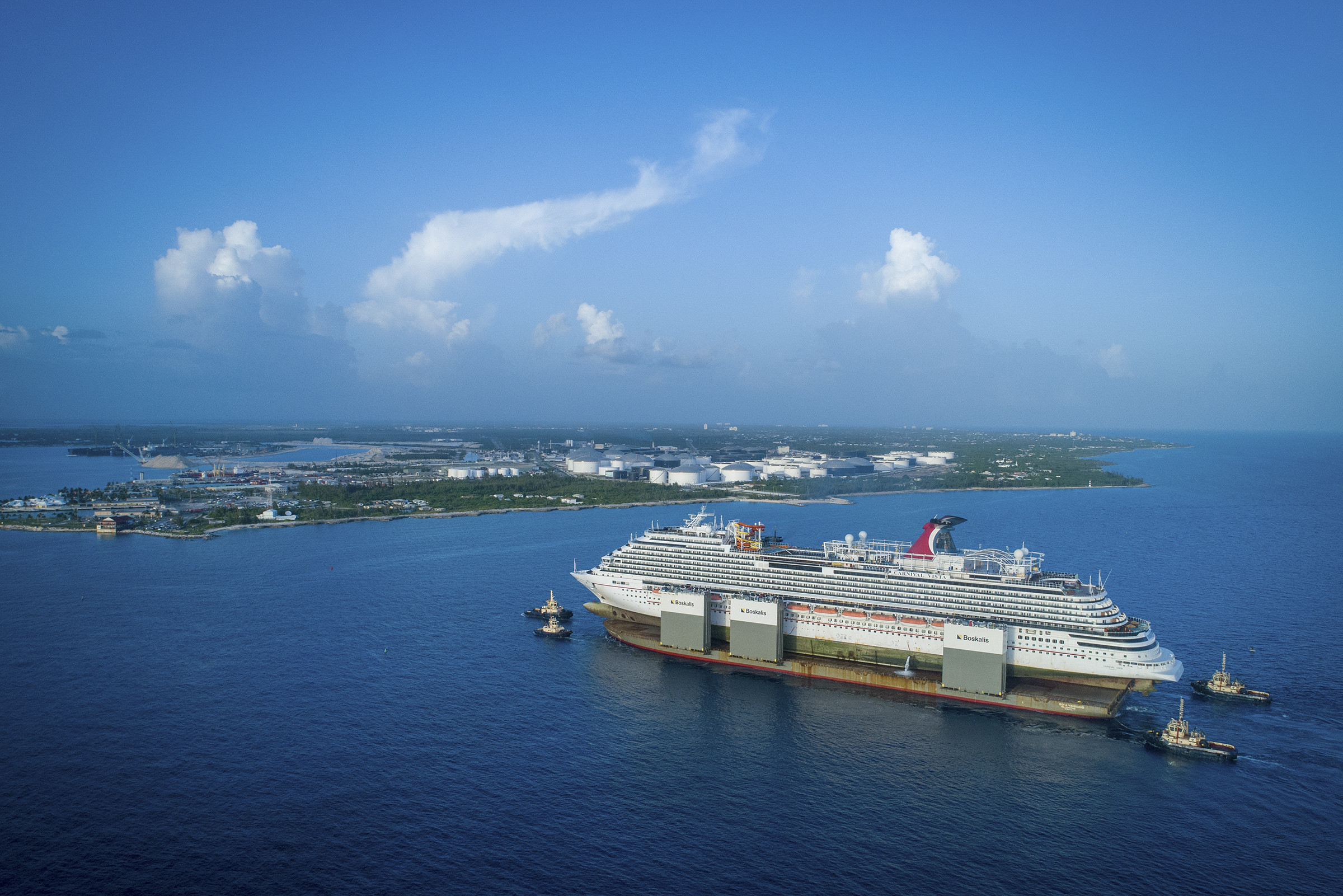
Excellent opportunity
The repairs on the Vista were completed in six days. The rapid unloading operation, which lasted only eight minutes, brought a successful project to an end. The whole operation took a week less than the cruise line had anticipated. “Our team in Freeport consisted of eight engineers but, with colleagues at the head office and the crews of the supporting ships involved, there were dozens of colleagues involved in the project. Obviously, our expertise was one of the critical success factors but the good collaboration and our entrepreneurial team spirit were particularly vital,” says a satisfied Roland. “I’m proud to have been involved in this exceptional operation. The attention this project received worldwide in newspapers, on television and social media also made it a special experience for me. This was an excellent opportunity for Boskalis to show that we can manage exceptional challenges like this.”
